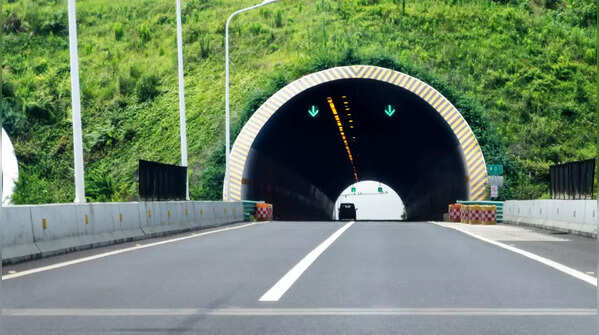Top 5 longest road tunnels in the world

The world’s longest road tunnels: Top 5 list
In a world where faster travel and better connectivity are becoming more important, some of the most impressive solutions lie beneath our feet. Road tunnels– once considered difficult and expensive to build– have now become symbols of human innovation. Dug through mountains, beneath cities, and stretching for miles, these tunnels quietly carry millions of vehicles each year.
What makes these tunnels special isn’t just their size, but the challenges they’ve overcome– from tough terrains to building at extreme depths. Let’s take a closer look at five of the world’s longest road tunnels– each a remarkable achievement in engineering and planning. Note: This list is based on information from We Build Value digital magazine. Images used in the article are for illustrative purposes only.

Lærdal Tunnel, Norway
Connecting the towns of Lærdal and Aurland in Norway, this 24.5-kilometre tunnel holds the title of the longest road tunnel in the world. Instead of upgrading the older mountain routes, Norwegian authorities opted for a more direct, weather-resistant solution. Opened in 2000, the tunnel was designed to provide not only a faster route but also a more comfortable driving experience.
The tunnel's lighting and structure were carefully planned to reduce driver stress. During construction, around 2.5 million cubic metres of rock had to be removed, making this one of Norway’s most ambitious and challenging transport projects.

Yamate Tunnel, Japan
Japan’s Yamate Tunnel stretches 18.2 kilometres beneath Tokyo, forming a key part of the city’s inner expressway loop. What makes this tunnel stand out isn’t just its length, but the timeline– the project was developed over two decades, with different sections gradually opening between 1992 and 2015. Building such an extensive underground route in a densely populated urban area required meticulous planning and flawless execution.

Zhongnanshan Tunnel, China
Located in China’s Shaanxi province, the Zhongnanshan Tunnel stretches just over 18 kilometres and passes beneath the Zhongnan Mountain. Built between 2002 and 2007, the tunnel’s biggest engineering challenge was its depth, reaching as deep as 1,640 metres at its lowest point. This dual-bore tunnel was a crucial addition to the region’s infrastructure, providing a safer and more efficient route through the rugged mountain terrain.

Jinpingshan Tunnel, China
The Jinpingshan Tunnel in Sichuan, stretching 17.5 kilometres, is one of the few on this list not open to public vehicles. It was built to provide access to the Jinping Dam, the highest dam in the world. While it’s not accessible for general traffic, the tunnel stands as one of the region’s most significant engineering feats. Its value lies not in public use but in supporting one of China’s most ambitious hydropower projects.

Gotthard Road Tunnel, Switzerland
Connecting the northern and southern parts of Switzerland, the Gotthard Road Tunnel stretches 16.84 kilometres beneath the Alps. Completed in 1980 after ten years of construction, it held the title of the longest road tunnel in the world for two decades.
Linking Göschenen and Airolo, the tunnel significantly improved year-round road travel through the region. In 2016, Swiss citizens voted to approve the construction of a second tunnel to help manage future maintenance and traffic flow.








